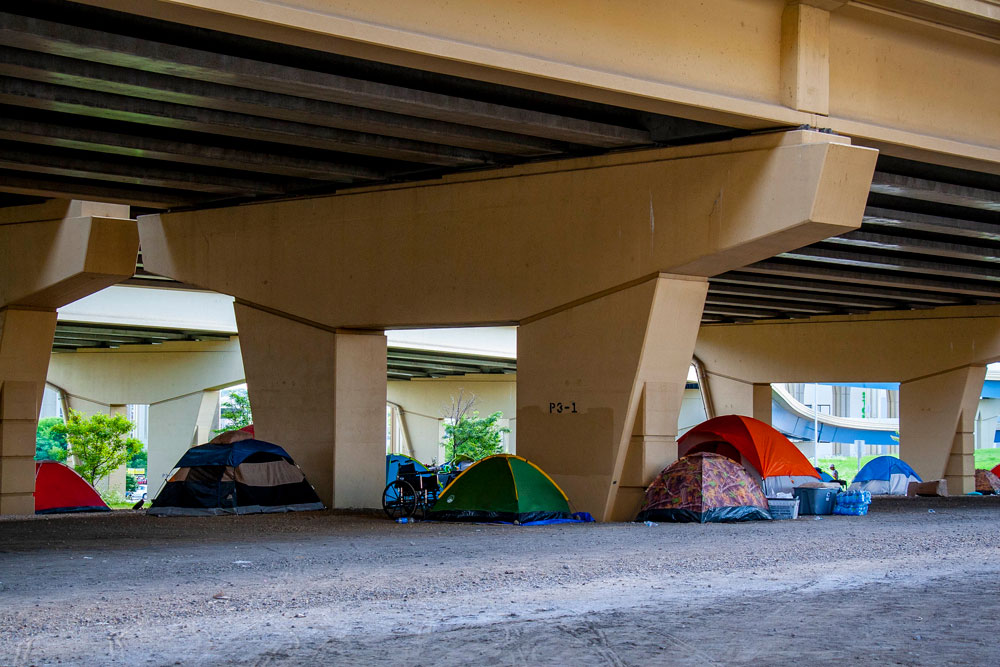
August 17, 2020; WBUR
The US is facing the most severe and devastating housing crisis in its history: 30–40 million Americans could be facing eviction by the end of 2020, creating the widespread displacement of millions of families and exponentially increasing homelessness across the country. The federal moratorium on evictions expired, and despite President Trump’s call in early August to reinstate it, putting another temporary moratorium into place is simply applying a band-aid to a gaping wound in light of expired unemployment benefits and millions out of work—some forced to live on $58 a week.
According to a collaborative policy memo put out by policy and legal experts across the country, it’s not just renters who are in potentially dire straits. The COVID-19 housing crisis has compounded the risk of foreclosure and bankruptcy for small property owners as well, many of whom generally lack access to capital beyond their rental properties. Fifty-eight percent of the “mom and pop” landlords who make up almost half of US landlords “have neither the cash nor the credit availability to cover their costs when the rents aren’t paid.” The more than 13,000 empty apartments currently in Manhattan, a record high since the start of data collection, is a searing image of what’s happening all over, because like the national numbers, “half of Manhattan’s apartment rentals are owned by small business owners, rather than large publicly traded companies or the big, well-funded real estate families.”
The state of housing in the US prior to the pandemic was already incredibly troubling, as reported by the Joint Center for Housing Studies of Harvard University (JCHS), which stated that 47.5 percent of all renters in 2018 were “rental cost-burdened,” meaning that their monthly rent cost over 30 percent of their monthly income. Of those below the poverty line in 2018, the majority spent at least half of their income on rent, and for one in four, it was 70 percent of their income. Over 14 million renter households in 2016 (or 33 percent) had minor children. JCHS noted that when the pandemic hit, 25 percent of all renters were paying over 50 percent of their monthly income on rent. With cuts to affordable housing over the last 10 years, millions of Americans and their children were already vulnerable to eviction before COVID-19.
Housing instability and eviction vulnerability have historically had a much greater impact on communities of color, studies showing that they are “twice as likely to be renters and are disproportionately likely to be low-income and rental cost-burdened,” with Black and Latinx communities constituting 80 percent of evictions. In cities like Baltimore, Maryland, evictions for Black renters exceed whites by almost 200 percent.
Sign up for our free newsletters
Subscribe to NPQ's newsletters to have our top stories delivered directly to your inbox.
By signing up, you agree to our privacy policy and terms of use, and to receive messages from NPQ and our partners.
Many families across the country are worried about homelessness, forcing some into impossible and devastating choices: get any job and risk personal illness and the illness of your family or risk being homeless and on the street with your children. This was exactly the situation for Latisha Gonzalez in Ohio, a single mother with two children, one aged seven and one eight. After losing work and childcare at the start of the pandemic, Gonzalez was determined to keep herself and her children from homelessness. After going through a legal mediation process with her landlord who had issued an eviction order because of unpaid rent, Gonzalez is now working at Amazon, “doing three 12-hour shifts a week. She gets paid every week, and almost all of the money from her next few paychecks will be going toward rent.” In the words of Gonzalez’s lawyer Deborah Coleman, she is “one of the fortunate ones.”
As 36 percent of renters missed their July payments according to Apartment List, up from 30 percent in June and 31 percent in May, many are looking for alternative means to pay their rent, including credit cards, which saw an increase in use for paying rent of 31 percent between March and April, and an additional 20 percent increase from April to May.
With millions struggling to survive following the expiration of the weekly $600 in unemployment benefits, more and more of families’ budgets are going toward rent, meaning that less is going toward food. At the end of July, nearly 30 million Americans claimed that they don’t have enough food, and Washington University in St. Louis recently reported that food pantry needs in some states have increased by 2,000 percent. Almost all of Gonzalez’s income, mentioned above, goes to rent, and she, along with her two children, are surviving on SNAP benefits and the $10 a week her uncle sends her for gas, just so she can get to work.
At the end of July, the U.S. Census Bureau Household Pulse Survey (Week 12), stated that 43 percent of renters who have children and 33 percent of all renters had little to no confidence that they could pay their August rent on time, and among those renters who earn less than $35,000 per year, 42 percent doubted their ability to pay August rent, rates exponentially worse for Black and Latinx renters, whose figures are twice that of white renters.
We are on the precipice of a pervasive and enduring housing crisis that, like the pandemic and the recession, is disproportionately affecting communities of color. And it is imperative that the government act swiftly and act comprehensively to prevent what could cause long-term and unprecedented harm to millions of Americans families, forcing parents and children onto the streets.—Beth Couch











